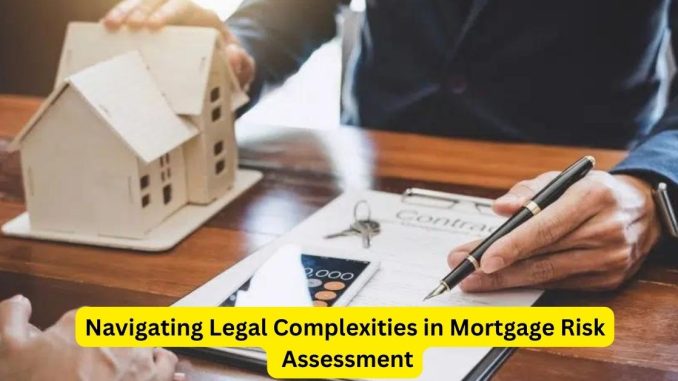
Mortgage risk assessment is a critical process in the lending industry, determining the creditworthiness of borrowers and the potential risks associated with mortgage loans. However, this assessment is fraught with legal complexities that lenders and financial institutions must navigate to ensure compliance and mitigate potential risks.
One of the primary legal challenges in mortgage risk assessment involves fair lending practices. Federal laws, such as the Fair Housing Act and the Equal Credit Opportunity Act, prohibit discrimination based on race, gender, religion, or other protected characteristics in lending decisions. Ensuring that risk assessment models do not inadvertently discriminate against certain groups while accurately evaluating risk remains a significant challenge for lenders.
Regulatory compliance is a key consideration in mortgage risk assessment. Financial institutions must adhere to regulatory guidelines set forth by entities like the Consumer Financial Protection Bureau (CFPB) and other supervisory agencies. These regulations often dictate the standards for underwriting practices, risk evaluation, and disclosure requirements, necessitating meticulous attention to detail and ongoing compliance monitoring.
The legal landscape also poses challenges related to risk modeling and data privacy. Mortgage risk assessment heavily relies on data analysis and modeling to predict borrower behavior. However, ensuring the accuracy, fairness, and transparency of these models while safeguarding sensitive borrower information in compliance with privacy laws (such as the Gramm-Leach-Bliley Act and state privacy regulations) presents a complex balancing act for lenders.
Transparency and disclosure requirements are critical legal aspects in risk assessment. Lenders are obligated to provide borrowers with clear and comprehensive information about the factors considered in assessing their creditworthiness. Ensuring that borrowers understand the risk factors and how they influence lending decisions is essential to comply with disclosure regulations and prevent potential legal disputes.
Another challenge involves managing the legal implications of risk assessment errors. Inaccurate risk evaluations can lead to financial losses for lenders and borrowers, potentially resulting in disputes, litigation, or regulatory penalties. Addressing these errors, rectifying inaccuracies, and implementing measures to prevent future mistakes are crucial for mitigating legal risks.
Additionally, the evolution of fintech and alternative lending models introduces legal challenges in mortgage risk assessment. New technological platforms and innovative lending approaches may not always align with existing regulatory frameworks, necessitating adaptations to ensure compliance while leveraging technological advancements.
In conclusion, mortgage risk assessment is a multifaceted process fraught with legal challenges. Navigating fair lending laws, regulatory compliance, data privacy, transparency requirements, error management, and emerging fintech landscapes requires vigilance and adaptability from lenders. Successfully addressing these legal complexities is crucial for maintaining the integrity of mortgage lending practices and protecting the rights of both lenders and borrowers.
Leave a Reply